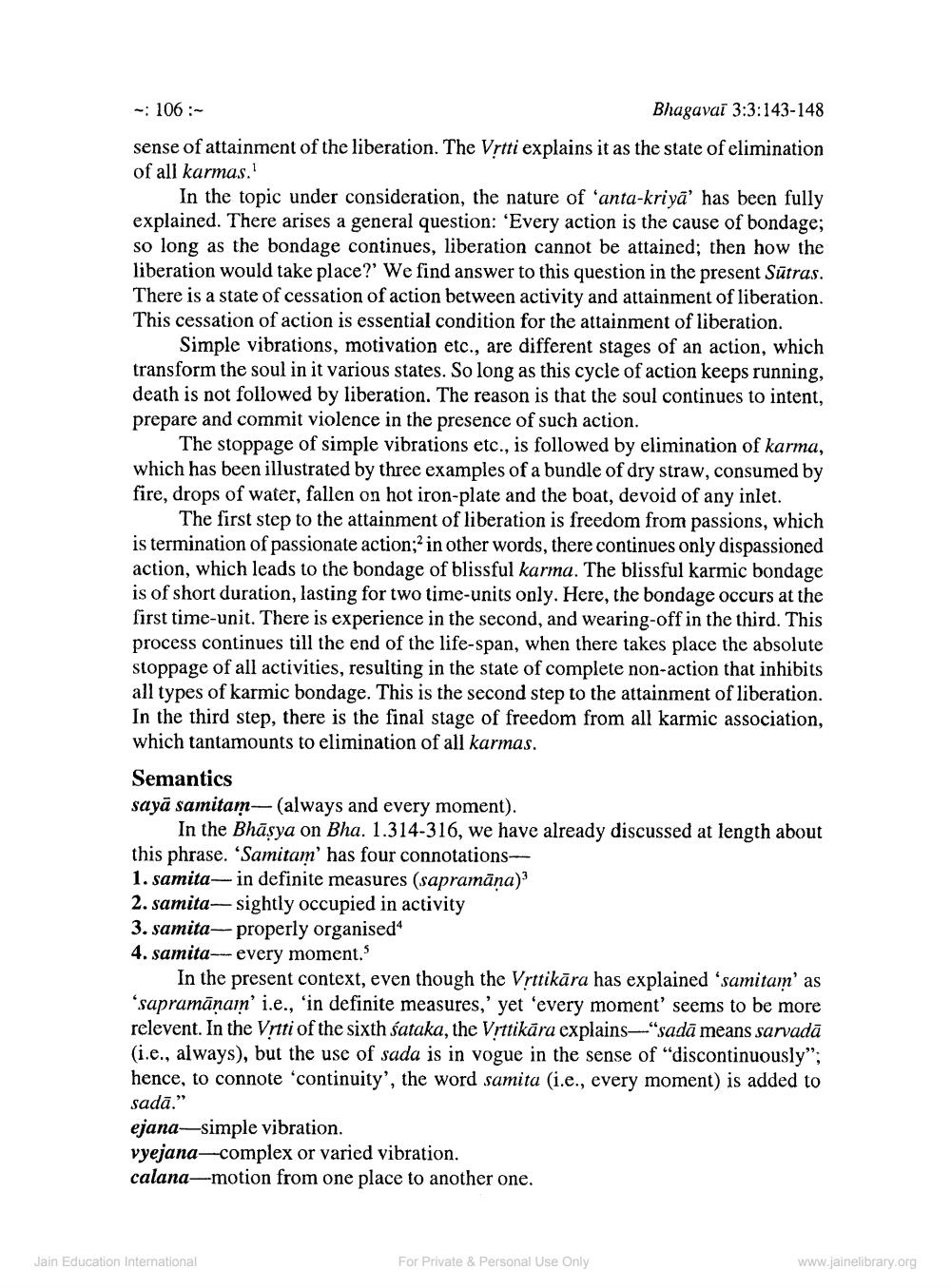________________
-:106:
Bhagaval 3:3:143-148 sense of attainment of the liberation. The Vṛtti explains it as the state of elimination of all karmas."
In the topic under consideration, the nature of 'anta-kriya' has been fully explained. There arises a general question: 'Every action is the cause of bondage; so long as the bondage continues, liberation cannot be attained; then how the liberation would take place?" We find answer to this question in the present Sutras. There is a state of cessation of action between activity and attainment of liberation. This cessation of action is essential condition for the attainment of liberation.
Simple vibrations, motivation etc., are different stages of an action, which transform the soul in it various states. So long as this cycle of action keeps running. death is not followed by liberation. The reason is that the soul continues to intent, prepare and commit violence in the presence of such action.
The stoppage of simple vibrations etc., is followed by elimination of karma, which has been illustrated by three examples of a bundle of dry straw, consumed by fire, drops of water, fallen on hot iron-plate and the boat, devoid of any inlet.
The first step to the attainment of liberation is freedom from passions, which is termination of passionate action; in other words, there continues only dispassioned action, which leads to the bondage of blissful karma. The blissful karmic bondage is of short duration, lasting for two time-units only. Here, the bondage occurs at the first time-unit. There is experience in the second, and wearing-off in the third. This process continues till the end of the life-span, when there takes place the absolute stoppage of all activities, resulting in the state of complete non-action that inhibits all types of karmic bondage. This is the second step to the attainment of liberation. In the third step, there is the final stage of freedom from all karmic association, which tantamounts to elimination of all karmas.
Semantics
saya samitam (always and every moment).
In the Bhāṣya on Bha. 1.314-316, we have already discussed at length about this phrase. "Samitam' has four connotations
1. samita- in definite measures (sapramäṇa)
2. samita-sightly occupied in activity
3. samita-properly organised'
4. samita- every moment."
In the present context, even though the Vṛttikāra has explained 'samitam' as 'sapramāṇam' i.e., 'in definite measures,' yet 'every moment' seems to be more relevent. In the Vrtti of the sixth sataka, the Vrttikära explains-"sada means sarvadā (i.c., always), but the use of sada is in vogue in the sense of "discontinuously"; hence, to connote 'continuity', the word samita (i.e., every moment) is added to sadā."
ejana simple vibration.
vyejana-complex or varied vibration.
calana-motion from one place to another one.
Jain Education International
For Private & Personal Use Only
www.jainelibrary.org




